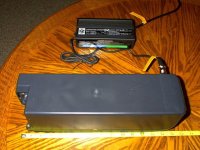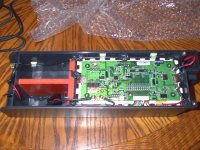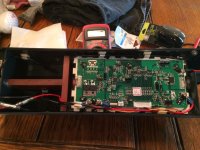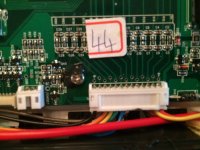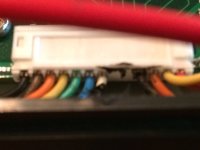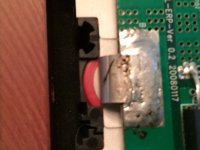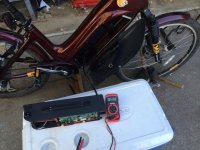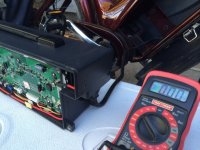Obiwan007
1 kW
Here is the bike. It is an older Europa tres terra 3.

I have had it for about a year and it has been pretty bullet proof since I got it. Last week, however, between one battery charge and another it developed some odd symptoms. With a full charge the bike powers up but is VERY weak and the red "empty" light on the throttle mounted gauge is lighted. Almost immediately the empty light begins to flash as if the battery is near LVC and then the bike powers down. I have re-charged the battery and tested it to find it fully charged. I have gone through all of the connections and found them secure with good continuity. I am unfamiliar with the Heisman motor which I believe is a brushed motor. Here are some other pictures of the motor, battery compartment and controller.

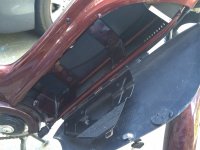
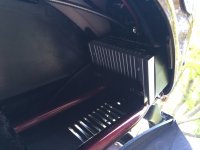

Any help with devising a plan for diagnosing the problem would be greatly appreciated. I use this bike primarily for e-bike evangelism and having it operational allows me to take others out on rides with us. Obiwan

I have had it for about a year and it has been pretty bullet proof since I got it. Last week, however, between one battery charge and another it developed some odd symptoms. With a full charge the bike powers up but is VERY weak and the red "empty" light on the throttle mounted gauge is lighted. Almost immediately the empty light begins to flash as if the battery is near LVC and then the bike powers down. I have re-charged the battery and tested it to find it fully charged. I have gone through all of the connections and found them secure with good continuity. I am unfamiliar with the Heisman motor which I believe is a brushed motor. Here are some other pictures of the motor, battery compartment and controller.




Any help with devising a plan for diagnosing the problem would be greatly appreciated. I use this bike primarily for e-bike evangelism and having it operational allows me to take others out on rides with us. Obiwan



